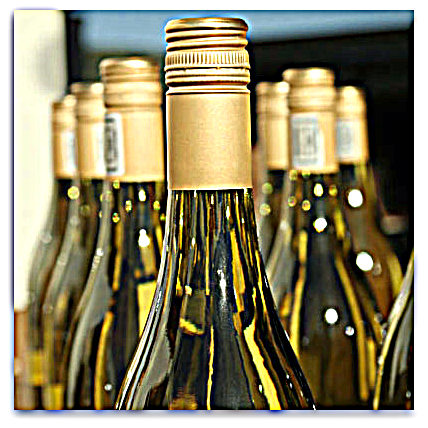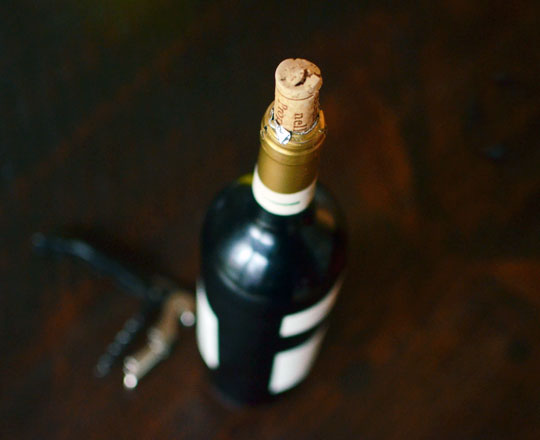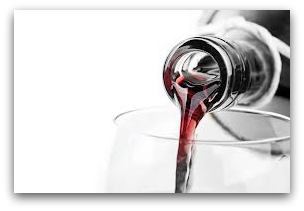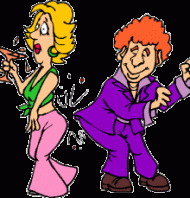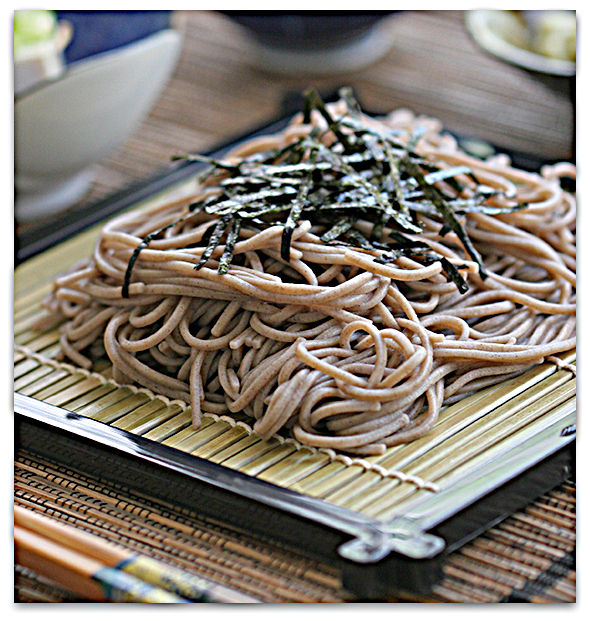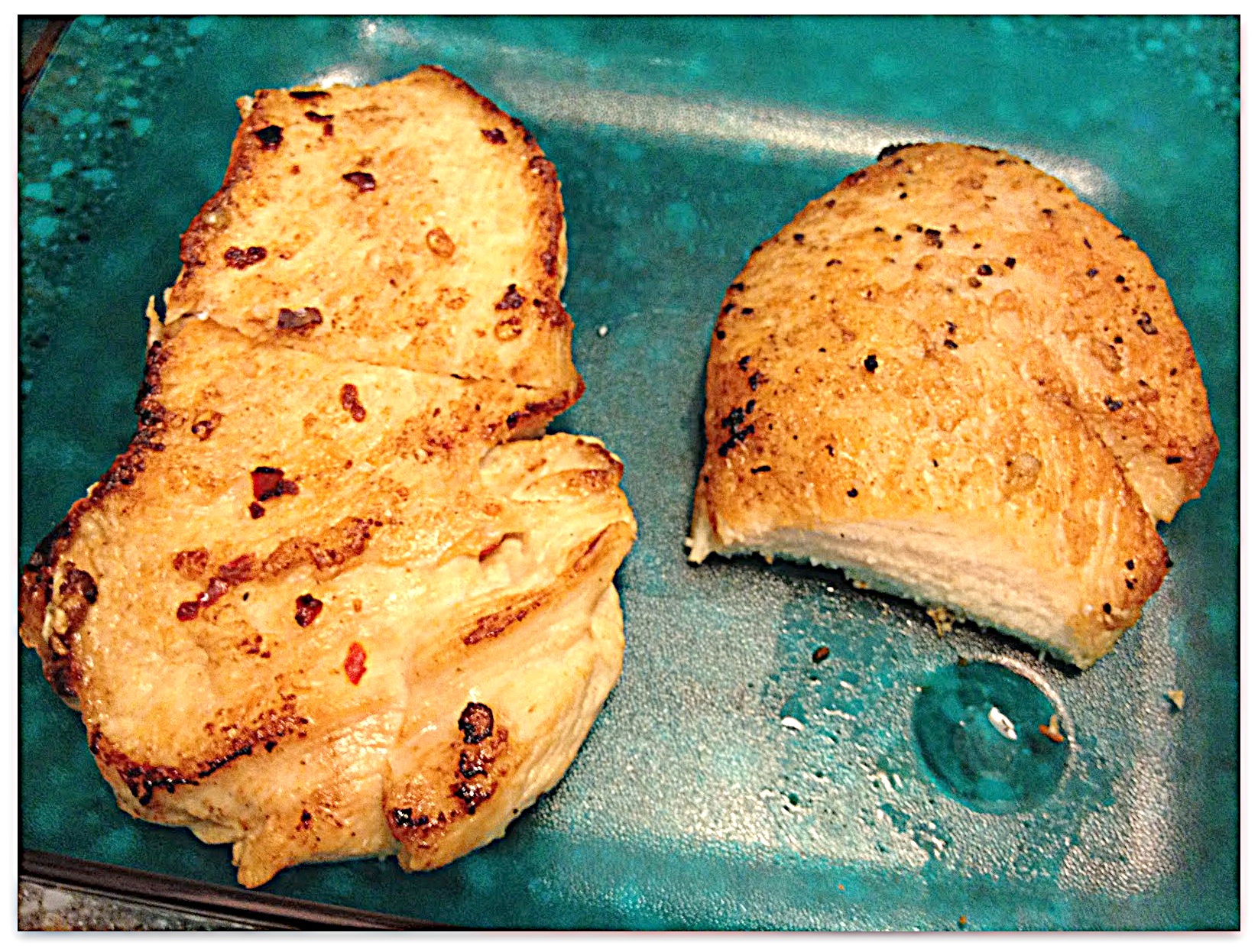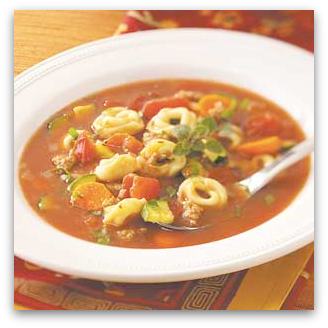With more people eating and drinking out and with the added benefits of drinking wine, the wine culture has become the standard norm in many a countries but a lot of people are clueless on how to go about the ritual of wine tasting and getting into the dreaded territory of rejecting a bad wine. In the following write up, we have tried to make the whole process of tasting and ordering your favourite wine a simple affair.
Before wine bottles had labels, there was no real proof that a particular bottle of wine came from the winery to which it was attributed to. Some unscrupulous restaurateurs would pass off common French wine as having come from the famous châteaux. To maintain their good reputations, the châteaux began branding their corks. Restaurants then began presenting the corks to customers to verify the wine’s origin.
The practice continues to this day, long after the need to do so has passed. So, what are you, the diner, supposed to do with the cork once the waiter has plopped it down in front of you? Anything you want. Ignore it. Examine it if you prefer. Sniff it if you feel like it. Slip it into your pocket to take as a souvenir. The cork won’t tell you anything that won’t be evident in the glass.
Presentation of the cork will become less of an issue as more wineries opt for screw cap closures. Unless there’s a winning sweepstakes number inside the cap, the screw cap probably won’t be presented for inspection.
In the western society the man ordering a bottle of wine for his companions, or offering wine to guests, often has the first sip from his glass and then has the other glasses filled. This is a survival of the old ‘tasting’ custom, by which the host ‘approved’ the drink, and ensured that it was free from poison. In Moslem countries the ruler had an official taster, and only after he had tried the sultan’s food and drink in his presence without ill effects, did the latter partake of them himself.
Wine tasting etiquette is essential when embarking on the ‘wine presentation ritual’. Many good restaurants train their servers to perform ‘the ritual’ with such solemnity and poise that you feel put in the spot light for your every move. But in order to overcome the awkward nature of this time-tested ceremony, you first need to understand what each step entails, and what purpose it serves.
Often enough, this alone will help ease your feelings of discomfort and put the spot light back on the wine itself, instead of on how you react to the waiter.
The dreaded, ‘wine ritual’ – broken down step by step:
Step One:
The waiter or sommelier will present the wine bottle for inspection to the person who ordered the wine (let’s assume here that it’s you).This is simply to make sure that the bottle is indeed the one you ordered – because like everyone else, waiters are human, and can grab the wrong label off the shelf by accident, especially if the wine racks aren’t clearly arranged or if it’s just a crazy hectic day at the restaurant.
If you ordered an Italian wine but are presented with a Californian, this is the time to spot that mistake – not after the bottle is opened.
If it’s indeed the right label, nod your head in approval.
Step Two:
The server will uncork the bottle and place the cork in front of you for inspection.
This is to give you a chance to examine and smell the cork to tell if it is in good condition, and also if the cork seems to be the appropriate/legitimate cork for the given bottle.
(So you’ve not been hacked for a $200.00 bottle of wine that’s been refilled and re-corked with a $20 red table wine.)
If there’s damage to the cork, or if it looks mouldy or suspicious in any way, raise your concerns up lightly with your group, and in front of your waiter, but wait to taste the wine before making any rash or final decisions about the quality or state of the wine itself.
Step Three:
If your chosen wine needs aeration, your server should promptly bring a decanter to decant it at the table.
However, some restaurants do not provide decanters, or worse yet, many wait staff are not skilled on the wine presentation ritual, without knowing if a wine does or does not need decanting.
If you know your wine needs decanting, make sure to let your waiter know this before proceeding, so as not to reject a perfectly good wine that simply needed a few moments to breathe before being taste-tested.
Step Four:
The server then pours a sampling of wine into your glass and waits for your impressions.
Simply swirl and sniff the wine, and take a liberal sip to get a feel for the wine’s mouthfeel, tannic structure, and flavors.
If the wine is acceptable – here’s when you nod your final approval.
If however, the wine tastes mouldy, murky, flat, acidic, or like nail polish, this is your chance to return it guilt-free – not after half the table has had a glass and then comes up with a final decision to return the bottle.
In that case the restaurant will probably refuse to take it back, and rightfully so.
Your time to accept or reject a wine bottle is NOW.
So either do it immediately, or if you’re unsure if the wine is corked or bad, or if you simply want a second opinion from your dinner party before committing to a wine, ask a second person at your table, whose opinion you trust, to give the wine a second swirl, sniff, and sip…all still in front of the waiter.
If it passes both your palates, congratulations, the wine is probably fine and you can give a nod and continue on your dining pleasure.
Plus, by soliciting a second opinion you avoid the embarrassment of accepting a corked wine that the dinner table will then have to suffer through, or else having someone else from the table insist it be returned after your window of opportunity has passed.
However – if the wine is indeed not in condition for consumption, try to describe to your server exactly what about the wine is unpleasant or faulty. It could be corked, or otherwise spoiled from some unknown source. Let the server then smell and taste the wine for his or herself if they insist.
But no matter what, don’t let a server make you feel guilty about returning a bottle you legitimately find undrinkable. That is a risk that restaurants take by storing wine. Chances are, at some point, with some percentage of their wine inventory, some bottles will simply be unavoidably bad, and you’re not required to pay for it.
It’s a risk the restaurant should accept and absorb graciously, not push onto the customer. That being said, don’t abuse the wine presentation ritual to simply taste wines to find one that suits you. No restaurant will tolerate that type of behaviour.
It’s one thing to not ‘like’ a wine, it’s another thing entirely for it to simply be undrinkable. The server trusts you know how to tell the difference.
Step Five:
So you’ve tasted and accepted your wine.
Now your server will pour the wine into your guest’s glasses and finish back with your glass.
What if the wine is spoilt?
If the wine is clearly flawed, do not hesitate to send it back. The wine could be corked, oxidized, or maderized. In other words, if it smells like wet cardboard, nail polish remover, or Sherry (when you didn’t order Sherry), something is wrong.
Calmly yet confidently, simply say, “I’m afraid this is a bad bottle, and I’d like to send it back.” A server who knows wine will probably smell it for himself and cart off the offending bottle. He’ll return with a replacement. Even if you’re the only one who perceives the flaw, the waiter will most likely replace the wine anyway.
Rejecting a bottle is hardly a financial hardship for the restaurant. The restaurant will, in turn, send the bottle back to the distributor for replacement. One of the most common wine questions I get is, “How do you tell if a bottle of a wine that you got at a restaurant is bad? I never know when to send one back.”
What does not constitute a bad bottle?
A bottle is not bad just because you don’t like the wine. There are many variations in wine-making style, so a bottle that doesn’t suit your preferences is not necessarily defective. Of course, the sommelier should help you select a bottle that’s to your liking, but ultimately only you are responsible for your personal tastes.
A bottle is not bad just because the label is damaged. Most wine travels thousands of miles to get to you, and there are plenty of opportunities for bumping and grinding. Likewise, in a cellar where thousands of bottles are stored together, one bottle can break, leaking wine onto hundreds of others. This does not affect the wine inside the intact bottles.
A bottle is not bad just because it has little white crystals accumulated at the bottom or adhering to the cork. These crystals (called tartrate) are a natural by-product of unfiltered, unprocessed fine wines and are totally harmless.
A bottle is not “corked” just because it has bits of cork in it (all this means is that an inexperienced waiter pushed the corkscrew all the way through the cork, thus forcing pieces into the wine) or because it has an unsightly or even moldy cork. The term corked has a very specific meaning, which I’ll explain in a moment.
There are essentially four things that constitute defects in a bottle of wine such that you should send it back: It can be corked, oxidized, maderized or refermented.
Corked
Corks are natural products, and some microorganisms like to eat them. A wine is properly said to be corked when it has come in contact with a contaminated cork during the aging process. The results of this contamination are almost always unmistakable: The wine will smell like a wet basement after a flood or dirty socks left in the hamper a little too long: moldy, nasty and not at all enticing to the taster. On the palate, it will be astringent, lacking in fruit, with a raspy finish. Sometimes you may even notice a paint-thinner quality.
Still, when you catch a wine in the earliest stages of being corked, there may be some doubt — here, all I can say is that the more you taste wine, the higher sensitivity you will attain in identifying corked wines. Also, if a wine is served too cold, you may not catch the telltale aromas on the initial offering. This isn’t your fault, and you are still well within your rights to send the bottle back once the defect becomes clear.
You cannot, however, discover a corked wine by smelling the cork. Many fine wines have issued from bottles with funky-smelling corks, and vice versa.
So here’s what you need to know. First, when someone says a wine is “corked” or “corky,” they mean that the cork, and thus the wine, has been contaminated with TCA. (They don’t mean that there are stray bits of cork floating around in the liquid.) Depending on the amount of TCA present, the wine will range from smelling like nothing at all—low levels of TCA will kill a wine’s aroma and flavor, even if the scent of the TCA itself isn’t discernible—to smelling like an old, damp cardboard shoe box removed from under a pile of moldy newspapers.
TCA is incredibly potent. One ounce of pure TCA would be enough to noticeably contaminate about 10 billion bottles of wine, or more than five times California’s annual wine production. Luckily, TCA tends to occur in amounts measured in parts per trillion, rather than ounces. But even at those microscopic levels, its presence can be damaging. Almost anyone can pick up the musty, damp scent of TCA at about 10 parts per trillion. Swirl the wine in a glass, sniff it, and if the aroma evokes someone’s grandfather’s basement, that bottle is corked. Experienced wine tasters can sometimes detect TCA in concentrations as low as one part per trillion.
A certain percentage of wine corks (and, less frequently, barrels or wooden pallets—also, rarely, entire wineries) end up contaminated with TCA. The chemistry of why this occurs is complicated. Essentially what happens is that phenols in cork-tree bark, when exposed to chlorine compounds (for various reasons), react with fungi or mold in the bark to produce TCA. How often this happens is much debated. The cork industry finds that TCA contaminates a very small number of corks, less than one percent (improved quality controls have helped in recent years). But winemakers tend to find the prevalence to be much higher, from three to five percent. What no one disagrees on is that some percentage of corks are tainted.
If you think about it, the fact that people put up with this kind of contamination is bizarre. What would happen, in contrast, if five percent of all the milk sold in grocery stores was spoiled? Of course, the fact that TCA’s effects can be subtle, and that people generally aren’t as familiar with wine as they are with milk, may explain why there isn’t a public outcry against this problem.
But there has been a reaction within the wine industry. All this TCA trauma has led to the rise of alternative seals for bottles—screw caps, glass stoppers, plastic corks, crown caps and the mysteriously named Zork, a kind of plastic stopper, among others. It’s also, to some degree, a reason why someone would train a dog to sniff out TCA.
How you can tell: Dank odor and taste like wet newspaper, moldy basement or smelly dog. It’s estimated that over 2% of bottles are tainted with TCA to some degree, making it the second most common wine fault.
- Can I fix it? Andrew Waterhouse, professor of wine chemistry at the UC Davis, claims you can pour the wine into a bowl with a sheet of plastic wrap. The TCA will be attracted to the polyethylene and pulled from your wine. I say life is too short for fixing wine faults. Send that bottle back!
Oxidized
Oxygen is wine’s invisible enemy, and when a wine gets exposed to air, it becomes “oxidized.” The result is flat, lifeless wine that loses its pretty, vibrant fruit scents and tastes insipid — it will likely remind you of vinegar. The trained eye will also often notice a certain dullness in the color. In whites, it can be light to dark yellow or even brownish. It is much less obvious in red wines.
How you can tell: Oxidized wines lose their brightness, both in color and in flavor. Bright reds turn to brick color or brownish, and fresh tastes develop drier, more bitter characteristics. White wines are much more susceptible to oxidization than reds, because reds’ higher tannin levels act as a buffer. If you really want to see what this looks like: open a new bottle, pour a glass and save that bottle for about a week. Congrats, your bottle is ruined. Drink some and compare it to that first glass you had.
- Can I fix it? No, but you can prolong the shelf life of opened wine by using a wine preserving tool. If your bottle is oxidized right off the shelf, it was either poorly sealed or mishandled. Take it back!
Maderized
Heat is another destructive force exerted on wine, usually as a result of bad storage. When one says a wine is “maderized,” it has been literally baked (this often happens in the holds of cargo ships as they cross the oceans in summertime). It actually tastes like Madeira and is reminiscent of almonds and candied fruits — admirable qualities in dessert wines but unacceptable in dry wines. You may also notice, in the unopened bottle, that the cork is pushed partly out of the neck (due to expansion within).
Refermented
Fine wine is a living thing, the product of controlled fermentation. Occasionally, some residual, dormant yeasts will wake up, and a wine will undergo a second fermentation after it has been released and shipped. This manifests itself as effervescence, or fizziness, on the tongue. Of course, this is desirable in champagne (which is purposely refermented in the bottle in order to create the bubbles), but never in fine still wine.
It’s difficult to learn to identify these flaws just by reading about them. Only experience and time will give you the training you need to spot every defect. But if you think a bottle is bad, ask the sommelier for confirmation. Don’t be afraid — at any reputable establishment the sommelier will not take a rejected bottle personally (not that you should care if he or she does). It is, after all, a statistical certainty that a certain percentage of wines will go bad through no fault of the restaurant. Some of these we can return to our distributors for credit; with others we’ll just take the loss. We compute our wine prices with the expectation that we’ll get some bad bottles. If we honestly think you’re crazy and believe with all our hearts that the bottle is perfect, we’ll still take it back — and maybe later have a glass ourselves.
The Corkage Fee
Some restaurants, including many famous ones, will allow you to bring a bottle of wine with you to dinner. You can pick out something special from your cellar or stop at a wine shop on the way and pick up something from the closeout shelf. You don’t pay restaurant markups, but you can expect to pay a corkage fee to cover the costs of wine service and use of the restaurant’s glassware. The fee is usually a per-bottle charge and can vary dramatically.
There are some rules of etiquette to follow when you want to take a bottle to a wine-serving restaurant. Never take a bottle that is already on the restaurant’s wine list. Call in advance to check. In fact, calling ahead is always a good idea. When you explain that you’ve been saving this special wine for ten years to drink in celebration of your tenth wedding anniversary, what restaurateur wouldn’t be charmed?
At tipping time, don’t forget to do the right thing: Tip your waiter according to what the bill would have been had you ordered the wine from the restaurant’s list
Sulfur Compounds
- What it is: Sulfur is a common additive to wine typically used to prevent other wine faults found in this article (ironically). Sometimes things can go wrong in its deployment though, and sulfur levels that are out of whack are pretty easy to notice.
- How you can tell: There are 4 primary sulfur compounds that can give your wine some funk, but they all manifest themselves in terrible flavors and smells. If you notice rotten egg, fart, burnt rubber, skunk, or asparagus pee in your wine, you probably have a sulfur problem.
- Can I fix it? The offending flavor can be weakened through decanting. If it is strong though, you should send it back from whence it came.
Secondary Fermentation …aka THIS IS NOT CHAMPAGNE!!
What it is: Tiny bubbles in your wine where there shouldn’t be any, especially in an old bottle of red wine. This usually happens when the residual sugar in the bottled wine feeds some critter introduced in unsanitary bottling.
How you can tell: Duh, look for the bubbles or listen for the psssst. There can also be a bit of a zippy flavor. Not all secondary fermentation is on accident though. Some winemakers will use it to add a little kick to their wines, and some styles are naturally frizzante such as vinho verde or some gruner veltliners.
Can I fix it? No, but do some research into the style to make sure it is not supposed to be there.
UV Light Damage …aka lightstrike
- What it is: Damage caused by exposure to excessive radiation, usually UV. Most commonly from storing wine in the sun or near a window.
- How you can tell: Lightstrike is most common in delicate white wines like Champagne, Viognier, and Chenin Blanc. It can make the wine taste like a wet sweater.
- Can I fix it? No, but you can be smart about storing your wine out of direct sunlight. The colored glass of wine bottles is supposed to mitigate lightstrike; so if you get a homemade white wine in a mason jar, put it in the darkest corner of your cellar.
Microbial Taints …aka I think there is something growing in there
What it is: Could be lots of things. Remember that wine is a product of microbial activity, and a lot of the handling of the wine in production is to make these microbes as happy as clams. There can be rogue strains of yeast that hijack the wine, or foreign critters that evaded sanitization.
How you can tell: Again, there are many bad guy bacteria out there. They all impart certain flavors and produce signature wine faults that fancy-pants Sommes brag about being able to distinguish, but mostly the bacteria all spoil the wine. They can have medicinal (think band-aid or rubbing alcohol), animal (think rodent cage or barnyard), or microbial (think yeasty sour things) flavors that are all pretty nasty.
Can I fix it? No, that flavor is either the critters themselves or their poo. Grab the microscope and go exploring!






